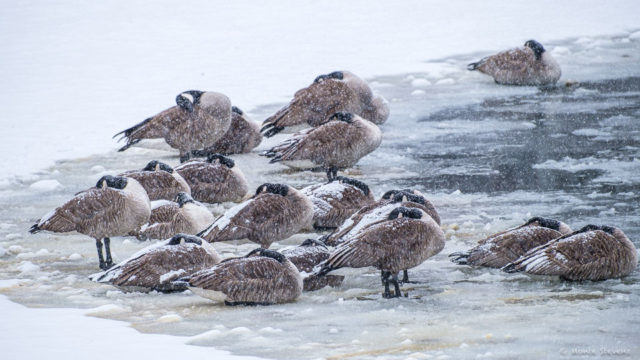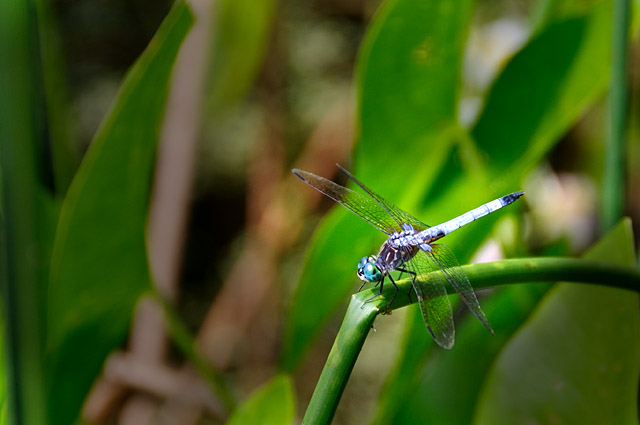Well, since you asked, here are some interesting facts for you about Canada Geese. Geese on the ice may be resting or preparing to move on to un-frozen bodies of water when need be. Huddling their bodies together on the ice of a shallow pond can cause it to warm up, especially along the edges, and increase their food supply, so sleeping on the ice can merely be a step towards thawing it out.
Their bodies are built to stay warm. They have insulated underbellies, and enough feathers, generally between 20,000 and 25,000, to keep their upper body temperature around 104°F (40°C). (Goose down has long been considered the warmest filling for things such as jackets and sleeping bags.)
Geese also have an interesting type of circulation through their feet that transfers warm blood back up into their bodies. Since their feet can’t freeze, they often sleep with them tucked underneath their bodies. This heat-transference phenomenon is one of the reasons why sometimes you’ll see them standing on one foot with the other tucked up under the belly, especially when the ground is frozen. 1Courtesy of Google.

